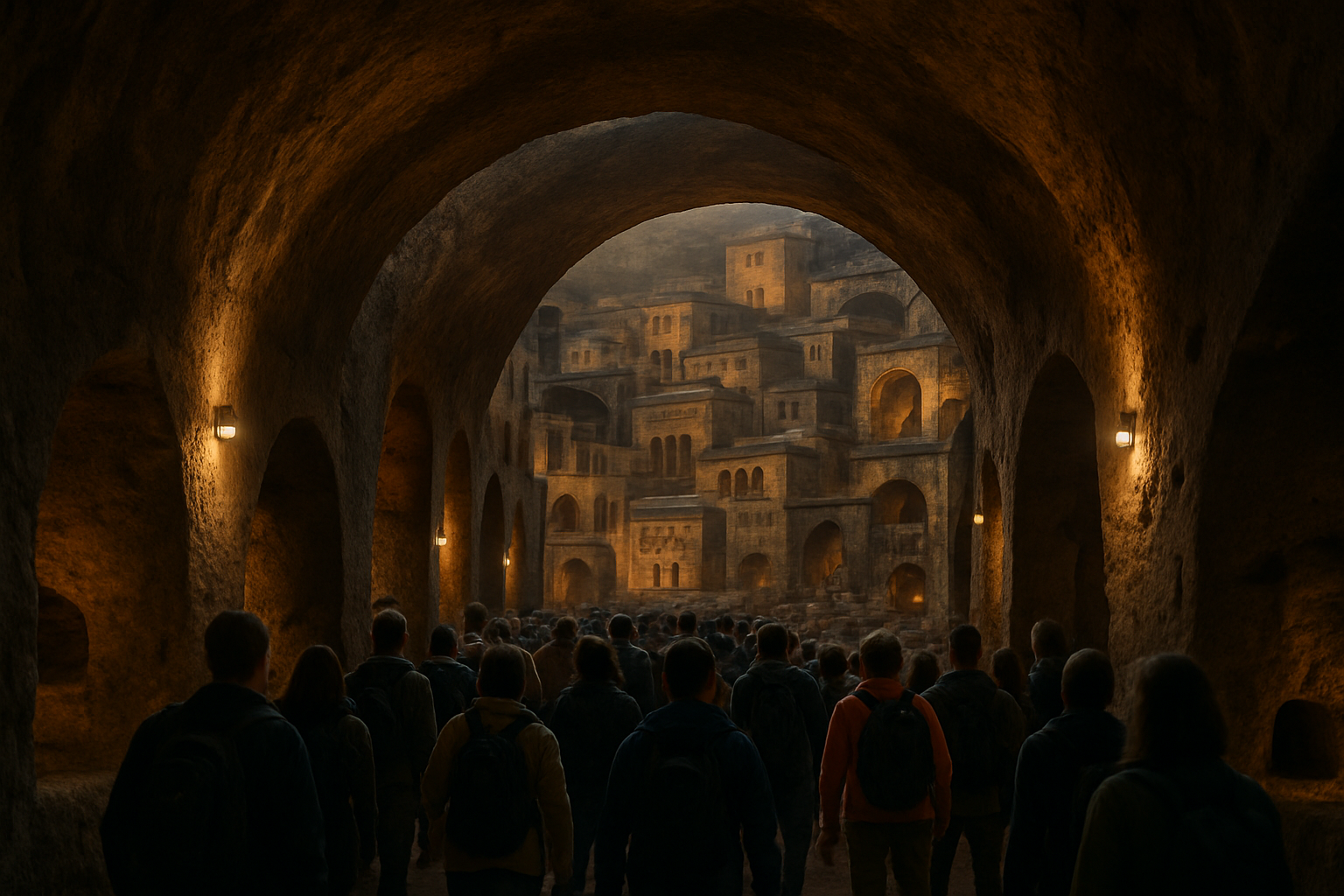Unveiling the Hidden World of Subterranean Art Galleries
In the depths beneath bustling city streets, a revolutionary art movement is taking shape. Subterranean art galleries, carved from abandoned tunnels and forgotten underground spaces, are redefining the boundaries of artistic exhibition. This burgeoning phenomenon marries urban exploration with cutting-edge creativity, offering a unique and immersive experience for art enthusiasts and adventure seekers alike. As traditional galleries face challenges in the digital age, these underground venues are breathing new life into the art world, challenging perceptions and pushing the limits of artistic expression.

From Abandoned to Avant-Garde
The transformation of these underground spaces into galleries is a testament to human creativity and ingenuity. What were once damp, dark, and neglected areas have been reimagined as cutting-edge exhibition spaces. Artists and curators work with architects and engineers to overcome unique challenges, such as lighting, ventilation, and accessibility. The result is a network of galleries that offer a stark contrast to the white cube aesthetics of traditional art spaces, providing a raw and atmospheric backdrop that enhances the impact of the artwork on display.
The Allure of the Underground
Subterranean galleries hold a unique appeal for both artists and visitors. For creators, these spaces offer freedom from the constraints of conventional gallery settings, allowing for more experimental and immersive installations. The physical journey to reach these hidden venues adds an element of adventure and exclusivity to the art-viewing experience. Visitors descend into another world, where the boundaries between art, architecture, and environment blur, creating a multi-sensory experience that traditional galleries struggle to match.
Challenges and Controversies
Despite their growing popularity, subterranean art galleries face numerous challenges. Safety concerns, legal issues surrounding the use of abandoned spaces, and the potential for environmental impact are all significant hurdles. Critics argue that the exclusive nature of these venues may limit accessibility, potentially exacerbating existing inequalities in the art world. Additionally, there are debates about the ethics of repurposing historical underground structures and the potential for gentrification in surrounding areas.
Impact on the Art World and Urban Development
The rise of subterranean galleries is having a profound impact on the broader art ecosystem. These venues are attracting a new generation of artists and art enthusiasts, revitalizing interest in physical art spaces in an increasingly digital world. Urban planners and city officials are taking notice, recognizing the potential of these galleries to drive cultural tourism and urban regeneration. Some cities are now actively incorporating underground art spaces into their development plans, seeing them as a unique way to celebrate local heritage while fostering contemporary creativity.
The Future of Underground Art
As the movement continues to grow, the future of subterranean art galleries looks promising and diverse. Technological advancements are opening up new possibilities for interactive and augmented reality installations in these unique spaces. There is also a growing trend towards sustainable and eco-friendly gallery designs, with some venues incorporating green technologies and focusing on environmental education alongside artistic exhibitions. The underground art scene is poised to play a significant role in shaping the future of urban culture and artistic expression, offering a compelling alternative to traditional art institutions and challenging our perceptions of where and how art can be experienced.




